-Метки
-Рубрики
- Actual (45)
- Animals (35)
- Architecture (63)
- Art (328)
- art history (44)
- conceptual art (4)
- graphics (14)
- hyperrealism, (8)
- Impressionism (25)
- realism (7)
- sculpture (17)
- surrealism (5)
- watercolors (116)
- ASIA (39)
- Chinese (11)
- Japanese (7)
- Korean (5)
- Thailand (9)
- AUDIOBOOKS (369)
- Blogs (5)
- art blog (5)
- History (40)
- Lessons (107)
- art lessons (45)
- art lessons (3)
- language lesson (53)
- Literature (260)
- Movies (100)
- MUSIC (28)
- Pets (56)
- cats (3)
- dogs (50)
- Philosophy (55)
- Quotes and Aphorisms. (49)
- Photography (32)
- photographer (17)
- photos (27)
- TRAVELS (33)
-Цитатник
Тайны Броукенвуда/The Brokenwood Mysteries https://www.amazon.com/gp/video/detail/B0111NEHPI/ref=...
Питер Пандер (Pieter Pander). Портреты собак и других животных. - (0)Питер Пандер (Pieter Pander). Портреты собак и других животных. &nbs...
"Сказка - ложь, да в ней намек..." - (0)"Сказка - ложь, да в ней намек..." Страдающее средневековье Masha Ru...
Английская художница Дебора Уокер/Deborah Walker. Часть 1. - (0)Английская художница Дебора Уокер/ Deborah Walker. Часть 1. Filtered Light; Handfast P...
Английская художница Дебора Уокер(Deborah Walker). Часть 2 - (0)Английская художница Дебора Уокер(Deborah Walker). Часть 2 Английская худож...
-Поиск по дневнику
-Подписка по e-mail
George Stubbs Birthday: The Art of Painting the Horse |

 /www.jacksonsart.com/blog/wp-content/uploads/2019/08/George_Stubbs_Mares_and_Foals_1762-300x159.jpg" target="_blank">https://www.jacksonsart.com/blog/wp-content/upload...res_and_Foals_1762-300x159.jpg 300w, https://www.jacksonsart.com/blog/wp-content/upload...res_and_Foals_1762-768x407.jpg 768w, https://www.jacksonsart.com/blog/wp-content/upload...es_and_Foals_1762-1024x542.jpg 1024w, https://www.jacksonsart.com/blog/wp-content/upload...res_and_Foals_1762-940x498.jpg 940w, https://www.jacksonsart.com/blog/wp-content/upload...tubbs_Mares_and_Foals_1762.jpg 1052w" width="620" />
/www.jacksonsart.com/blog/wp-content/uploads/2019/08/George_Stubbs_Mares_and_Foals_1762-300x159.jpg" target="_blank">https://www.jacksonsart.com/blog/wp-content/upload...res_and_Foals_1762-300x159.jpg 300w, https://www.jacksonsart.com/blog/wp-content/upload...res_and_Foals_1762-768x407.jpg 768w, https://www.jacksonsart.com/blog/wp-content/upload...es_and_Foals_1762-1024x542.jpg 1024w, https://www.jacksonsart.com/blog/wp-content/upload...res_and_Foals_1762-940x498.jpg 940w, https://www.jacksonsart.com/blog/wp-content/upload...tubbs_Mares_and_Foals_1762.jpg 1052w" width="620" />George Stubbs Birthday: The Art of Painting the Horse
23rd August 2019 by Clare McNamara 0The 25th of August, 2019 marks the 295th birthday of George Stubbs, best known for his realist style paintings of horses which demonstrate a passionate admiration for the animal and a studied knowledge of equine anatomy. This article commemorates Stubbs’ work and the legacy of horses depicted in art. We also asked three modern equine artists about their work and techniques and took a look at further spectacular depictions of horses throughout art history.
Above image: Mares and Foals without a Background, 1762, George Stubbs, Oil on canvas, 99 x 190.5 cm
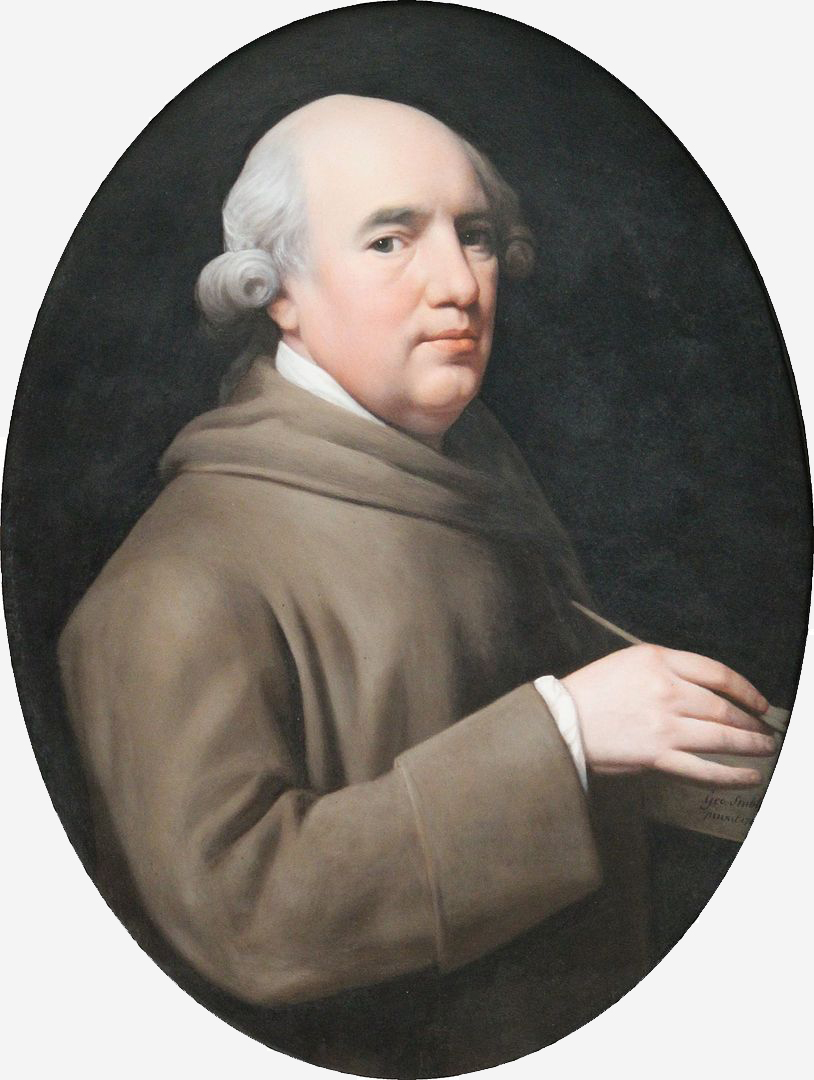 /www.jacksonsart.com/blog/wp-content/uploads/2019/08/814px-George_Stubbs_-_self_portrait-1-226x300.jpg" target="_blank">https://www.jacksonsart.com/blog/wp-content/upload..._-_self_portrait-1-226x300.jpg 226w, https://www.jacksonsart.com/blog/wp-content/upload...-_self_portrait-1-768x1019.jpg 768w, https://www.jacksonsart.com/blog/wp-content/upload...-_self_portrait-1-772x1024.jpg 772w, https://www.jacksonsart.com/blog/wp-content/upload..._-_self_portrait-1-620x823.jpg 620w" width="814" />
/www.jacksonsart.com/blog/wp-content/uploads/2019/08/814px-George_Stubbs_-_self_portrait-1-226x300.jpg" target="_blank">https://www.jacksonsart.com/blog/wp-content/upload..._-_self_portrait-1-226x300.jpg 226w, https://www.jacksonsart.com/blog/wp-content/upload...-_self_portrait-1-768x1019.jpg 768w, https://www.jacksonsart.com/blog/wp-content/upload...-_self_portrait-1-772x1024.jpg 772w, https://www.jacksonsart.com/blog/wp-content/upload..._-_self_portrait-1-620x823.jpg 620w" width="814" />
Self Portrait, 1781
George Stubbs
Enamel on wedgwood plaque, 67.6 x 51.1 cm
A Brief History of George Stubbs’ Career
George Stubbs was born in Liverpool in 1724. His father was a leather worker and Stubbs followed in him into this trade until around the age of 15, when he decided to pursue his dream of becoming a painter. He spent a short period of time under the guidance of a mentor and travelled for a while in Europe, seeking to discover what was more superior between nature and art, eventually finding nature to be, as he had suspected, more superior than any art could ever be.
 /www.jacksonsart.com/blog/wp-content/uploads/2019/08/Anatomy-Stubbs-247x300.jpg" target="_blank">https://www.jacksonsart.com/blog/wp-content/upload.../08/Anatomy-Stubbs-247x300.jpg 247w, https://www.jacksonsart.com/blog/wp-content/upload.../08/Anatomy-Stubbs-768x935.jpg 768w, https://www.jacksonsart.com/blog/wp-content/upload...08/Anatomy-Stubbs-841x1024.jpg 841w, https://www.jacksonsart.com/blog/wp-content/upload.../08/Anatomy-Stubbs-620x755.jpg 620w, https://www.jacksonsart.com/blog/wp-content/upload...08/Anatomy-Stubbs-940x1144.jpg 940w" width="986" />
/www.jacksonsart.com/blog/wp-content/uploads/2019/08/Anatomy-Stubbs-247x300.jpg" target="_blank">https://www.jacksonsart.com/blog/wp-content/upload.../08/Anatomy-Stubbs-247x300.jpg 247w, https://www.jacksonsart.com/blog/wp-content/upload.../08/Anatomy-Stubbs-768x935.jpg 768w, https://www.jacksonsart.com/blog/wp-content/upload...08/Anatomy-Stubbs-841x1024.jpg 841w, https://www.jacksonsart.com/blog/wp-content/upload.../08/Anatomy-Stubbs-620x755.jpg 620w, https://www.jacksonsart.com/blog/wp-content/upload...08/Anatomy-Stubbs-940x1144.jpg 940w" width="986" />
Three plates from The Anatomy of the Horse, 1766
George Stubbs
Etchings, 46.4 x 58.4 cm
Mainly self-taught as a painter and with an established interest in anatomy after having worked as an illustrator for a midwifery publication, Stubbs spent 18 months carefully dissecting horses and recording his anatomical findings in an illustrated publication entitled, The Anatomy of the Horse: including a particular description of the bones, cartilages, muscles, fascias, ligaments, nerves, arteries, veins, and glands.
 /www.jacksonsart.com/blog/wp-content/uploads/2019/08/Whistlejacket-248x300.jpg" target="_blank">https://www.jacksonsart.com/blog/wp-content/uploads/2019/08/Whistlejacket-248x300.jpg 248w, https://www.jacksonsart.com/blog/wp-content/uploads/2019/08/Whistlejacket-768x929.jpg 768w, https://www.jacksonsart.com/blog/wp-content/uploads/2019/08/Whistlejacket-620x750.jpg 620w" width="800" />
/www.jacksonsart.com/blog/wp-content/uploads/2019/08/Whistlejacket-248x300.jpg" target="_blank">https://www.jacksonsart.com/blog/wp-content/uploads/2019/08/Whistlejacket-248x300.jpg 248w, https://www.jacksonsart.com/blog/wp-content/uploads/2019/08/Whistlejacket-768x929.jpg 768w, https://www.jacksonsart.com/blog/wp-content/uploads/2019/08/Whistlejacket-620x750.jpg 620w" width="800" />
Whistlejacket, 1762
George Stubbs
Oil on canvas, 292 x 246.4 cm
His nearly life-sized painting, Whistlejacket, is one of the most famous horse paintings in the history of art. Stubbs paid incredible attention to the detail of Whistlejackets physiology, something that hadn’t been achieved to such realistic standards by any known painter before him.
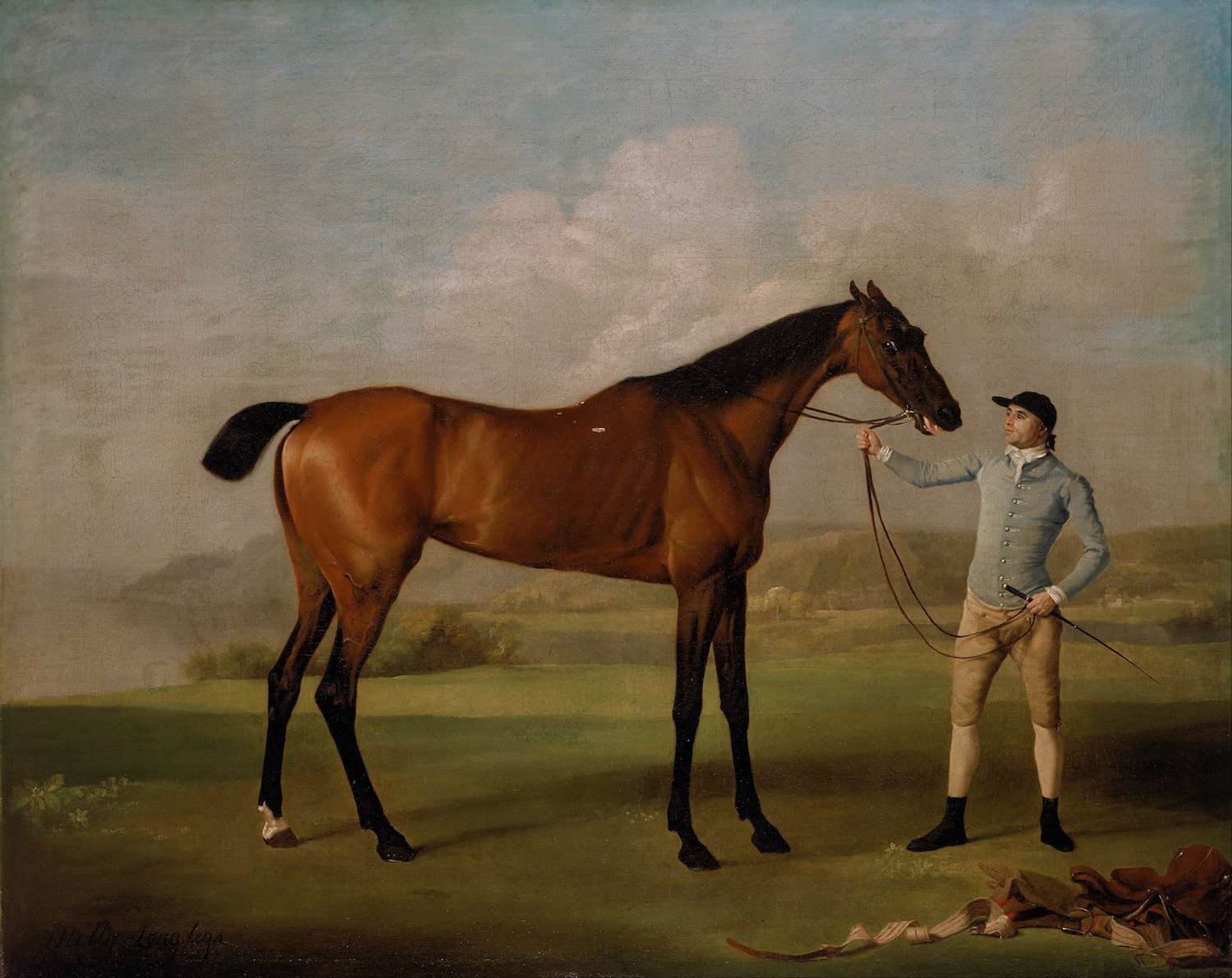 /www.jacksonsart.com/blog/wp-content/uploads/2019/08/George_Stubbs_-_Molly_Long-legs_with_her_Jockey_-_Google_Art_Project-1-300x238.jpg" target="_blank">https://www.jacksonsart.com/blog/wp-content/upload...ogle_Art_Project-1-300x238.jpg 300w, https://www.jacksonsart.com/blog/wp-content/upload...ogle_Art_Project-1-768x610.jpg 768w, https://www.jacksonsart.com/blog/wp-content/upload...gle_Art_Project-1-1024x813.jpg 1024w, https://www.jacksonsart.com/blog/wp-content/upload...ogle_Art_Project-1-620x492.jpg 620w, https://www.jacksonsart.com/blog/wp-content/upload...ogle_Art_Project-1-940x746.jpg 940w" width="1500" />
/www.jacksonsart.com/blog/wp-content/uploads/2019/08/George_Stubbs_-_Molly_Long-legs_with_her_Jockey_-_Google_Art_Project-1-300x238.jpg" target="_blank">https://www.jacksonsart.com/blog/wp-content/upload...ogle_Art_Project-1-300x238.jpg 300w, https://www.jacksonsart.com/blog/wp-content/upload...ogle_Art_Project-1-768x610.jpg 768w, https://www.jacksonsart.com/blog/wp-content/upload...gle_Art_Project-1-1024x813.jpg 1024w, https://www.jacksonsart.com/blog/wp-content/upload...ogle_Art_Project-1-620x492.jpg 620w, https://www.jacksonsart.com/blog/wp-content/upload...ogle_Art_Project-1-940x746.jpg 940w" width="1500" />
Molly Long Legs, 1761-62
George Stubbs
Oil on canvas, 101 x 127 cm
During his lifetime and career, George Stubbs was considered a sporting painter and because of this, he was never welcomed with a full membership to the Royal Academy.
 /www.jacksonsart.com/blog/wp-content/uploads/2019/08/Mares-and-Foals-on-River-Landscape_George_Stubbs-300x190.jpg" target="_blank">https://www.jacksonsart.com/blog/wp-content/upload...cape_George_Stubbs-300x190.jpg 300w, https://www.jacksonsart.com/blog/wp-content/upload...cape_George_Stubbs-768x487.jpg 768w, https://www.jacksonsart.com/blog/wp-content/upload...ape_George_Stubbs-1024x649.jpg 1024w, https://www.jacksonsart.com/blog/wp-content/upload...cape_George_Stubbs-620x393.jpg 620w, https://www.jacksonsart.com/blog/wp-content/upload...cape_George_Stubbs-940x595.jpg 940w" width="1536" />
/www.jacksonsart.com/blog/wp-content/uploads/2019/08/Mares-and-Foals-on-River-Landscape_George_Stubbs-300x190.jpg" target="_blank">https://www.jacksonsart.com/blog/wp-content/upload...cape_George_Stubbs-300x190.jpg 300w, https://www.jacksonsart.com/blog/wp-content/upload...cape_George_Stubbs-768x487.jpg 768w, https://www.jacksonsart.com/blog/wp-content/upload...ape_George_Stubbs-1024x649.jpg 1024w, https://www.jacksonsart.com/blog/wp-content/upload...cape_George_Stubbs-620x393.jpg 620w, https://www.jacksonsart.com/blog/wp-content/upload...cape_George_Stubbs-940x595.jpg 940w" width="1536" />
Mares and Foals in a River Landscape c.1763-8
George Stubbs
Oil on canvas, 101 x 161 cm
Stubbs worked right up to old age, commissioned by many aristocratic patrons including the Prince of Wales. He died in London at the age of 81. It wasn’t until the mid-twentieth century that his masterful work was truly recognised, when the art historian Basil Taylor, published the catalogue, Stubbs. In 2011, one of his works sold for £22.4 million at Christie’s, London.
 /www.jacksonsart.com/blog/wp-content/uploads/2019/08/George_Stubbs_-_A_Lion_Attacking_a_Horse_-_Google_Art_Project-300x230.jpg" target="_blank">https://www.jacksonsart.com/blog/wp-content/upload...Google_Art_Project-300x230.jpg 300w, https://www.jacksonsart.com/blog/wp-content/upload...Google_Art_Project-768x588.jpg 768w, https://www.jacksonsart.com/blog/wp-content/upload...oogle_Art_Project-1024x784.jpg 1024w, https://www.jacksonsart.com/blog/wp-content/upload...Google_Art_Project-620x475.jpg 620w, https://www.jacksonsart.com/blog/wp-content/upload...Google_Art_Project-940x720.jpg 940w" width="1500" />
/www.jacksonsart.com/blog/wp-content/uploads/2019/08/George_Stubbs_-_A_Lion_Attacking_a_Horse_-_Google_Art_Project-300x230.jpg" target="_blank">https://www.jacksonsart.com/blog/wp-content/upload...Google_Art_Project-300x230.jpg 300w, https://www.jacksonsart.com/blog/wp-content/upload...Google_Art_Project-768x588.jpg 768w, https://www.jacksonsart.com/blog/wp-content/upload...oogle_Art_Project-1024x784.jpg 1024w, https://www.jacksonsart.com/blog/wp-content/upload...Google_Art_Project-620x475.jpg 620w, https://www.jacksonsart.com/blog/wp-content/upload...Google_Art_Project-940x720.jpg 940w" width="1500" />
A Lion Attacking a Horse, 1762
George Stubbs
Oil on canvas, 66 x 97 cm
Contemporary Equine Artists
We asked three contemporary painters, who specialise in equine portraits, three questions about their love of painting horses, equine anatomy and any tricks and tips for rendering the best horsehair and fur.
Sara Butt, UK
What draws you to paint horses?
Sara: I was introduced to horses at a very young age, with family members who have bred, trained and shown through the years. I have never been far away from such beautiful creatures, they are so majestic, powerful and full of character, and of course, they know how wonderful they are. As an artist who paints animals, with all my work, it’s important for me to bring out their individual qualities. Horses have an abundance of character, charisma, mischief, and eyes full of expression. As with all animals, you wonder what they are thinking, all of which makes me love to paint them.
Have you spent time studying equine anatomy? What are your techniques for approaching the proportion of the horses in your work?
Sara: I wouldn’t say I have studied the equine anatomy as in book form, but I’ve watched horses, in the yard, racing, dressage and show jumping, this has given me an insight into their movement, stance, the shape and tone of their muscles. As for proportion technicality, no surprises! I tend to use the grid method, I could spend a day or more drawing out my subject, but it saves hours and my process is quite detailed and takes time, plus those legs can be tricky!
What is your most essential brush or tool for painting/drawing horsehair and fur?
Sara: I draw my subject using an HB 0.5 mechanical pencil, this works well for me as I like a very fine light detail on my board. I use a thicker brush something like a 0.2 for the base colour and a 2.0 for the detail, I go for a sable mix, as I find I get far better detail, and they do last.
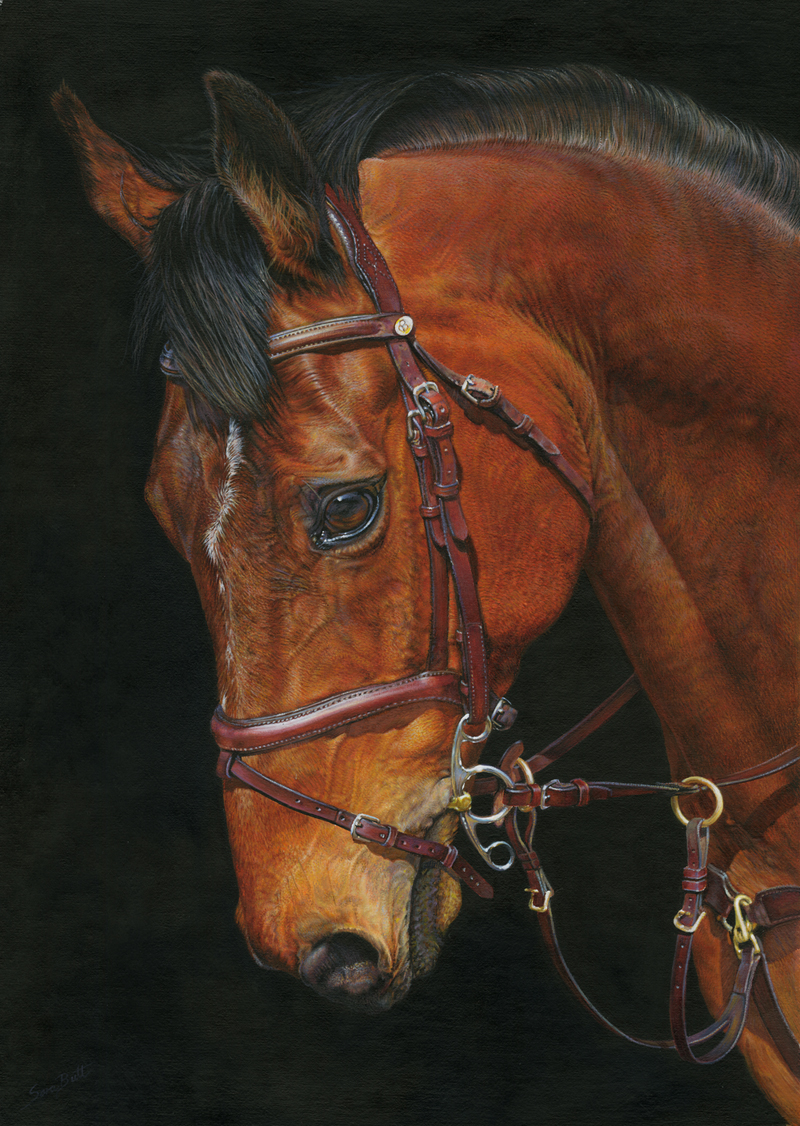 /www.jacksonsart.com/blog/wp-content/uploads/2019/08/Equine-Portrait-213x300.jpg" target="_blank">https://www.jacksonsart.com/blog/wp-content/upload...08/Equine-Portrait-213x300.jpg 213w, https://www.jacksonsart.com/blog/wp-content/upload...8/Equine-Portrait-768x1081.jpg 768w, https://www.jacksonsart.com/blog/wp-content/upload...8/Equine-Portrait-728x1024.jpg 728w, https://www.jacksonsart.com/blog/wp-content/upload...08/Equine-Portrait-620x873.jpg 620w" width="800" />
/www.jacksonsart.com/blog/wp-content/uploads/2019/08/Equine-Portrait-213x300.jpg" target="_blank">https://www.jacksonsart.com/blog/wp-content/upload...08/Equine-Portrait-213x300.jpg 213w, https://www.jacksonsart.com/blog/wp-content/upload...8/Equine-Portrait-768x1081.jpg 768w, https://www.jacksonsart.com/blog/wp-content/upload...8/Equine-Portrait-728x1024.jpg 728w, https://www.jacksonsart.com/blog/wp-content/upload...08/Equine-Portrait-620x873.jpg 620w" width="800" />
Equine portrait, 2011
Sara Butt
Acrylic on Board, 36 X 24 cm
 /www.jacksonsart.com/blog/wp-content/uploads/2019/08/The-Final-Furlong-300x214.jpeg" target="_blank">https://www.jacksonsart.com/blog/wp-content/upload...The-Final-Furlong-300x214.jpeg 300w, https://www.jacksonsart.com/blog/wp-content/upload...The-Final-Furlong-768x548.jpeg 768w, https://www.jacksonsart.com/blog/wp-content/upload...he-Final-Furlong-1024x730.jpeg 1024w, https://www.jacksonsart.com/blog/wp-content/upload...The-Final-Furlong-620x442.jpeg 620w, https://www.jacksonsart.com/blog/wp-content/upload.../The-Final-Furlong-100x70.jpeg 100w, https://www.jacksonsart.com/blog/wp-content/upload...The-Final-Furlong-940x670.jpeg 940w" width="1280" />
/www.jacksonsart.com/blog/wp-content/uploads/2019/08/The-Final-Furlong-300x214.jpeg" target="_blank">https://www.jacksonsart.com/blog/wp-content/upload...The-Final-Furlong-300x214.jpeg 300w, https://www.jacksonsart.com/blog/wp-content/upload...The-Final-Furlong-768x548.jpeg 768w, https://www.jacksonsart.com/blog/wp-content/upload...he-Final-Furlong-1024x730.jpeg 1024w, https://www.jacksonsart.com/blog/wp-content/upload...The-Final-Furlong-620x442.jpeg 620w, https://www.jacksonsart.com/blog/wp-content/upload.../The-Final-Furlong-100x70.jpeg 100w, https://www.jacksonsart.com/blog/wp-content/upload...The-Final-Furlong-940x670.jpeg 940w" width="1280" />
The Final Furlong, 2019
Sara Butt
Acrylic on gessobord, 25 x 35 cm
The Final Furlong will be exhibited in ‘A Natural Collaboration’ Art Exhibition held at the
Royal Opera Arcade Gallery, Pall Mall, London, 9th – 20th September, 2019.
 /www.jacksonsart.com/blog/wp-content/uploads/2019/08/Winter-Coat-600-1-1-182x300.jpg" target="_blank">https://www.jacksonsart.com/blog/wp-content/upload...inter-Coat-600-1-1-182x300.jpg 182w, https://www.jacksonsart.com/blog/wp-content/upload...nter-Coat-600-1-1-768x1269.jpg 768w, https://www.jacksonsart.com/blog/wp-content/upload...nter-Coat-600-1-1-620x1024.jpg 620w, https://www.jacksonsart.com/blog/wp-content/upload...nter-Coat-600-1-1-940x1553.jpg 940w" width="1500" />
/www.jacksonsart.com/blog/wp-content/uploads/2019/08/Winter-Coat-600-1-1-182x300.jpg" target="_blank">https://www.jacksonsart.com/blog/wp-content/upload...inter-Coat-600-1-1-182x300.jpg 182w, https://www.jacksonsart.com/blog/wp-content/upload...nter-Coat-600-1-1-768x1269.jpg 768w, https://www.jacksonsart.com/blog/wp-content/upload...nter-Coat-600-1-1-620x1024.jpg 620w, https://www.jacksonsart.com/blog/wp-content/upload...nter-Coat-600-1-1-940x1553.jpg 940w" width="1500" />
Winter Coat, 2014
Sara Butt
Acrylic on Board, 38 x 24 cm
Peggy Judy, USA
www.peggyjudy.fineartworld.com
What draws you to paint horses?
Peggy: From the age of three years, I have been smitten with “anything” horse. Hearing hoof beats coming down the road gave me “butterflies” in my stomach. At a very young age, I knew I wanted to be an artist. My parents encouraged me from the beginning. Horses were a major subject in my early attempts to be that artist. At fives years of age I started taking riding lessons where I was able to see, touch and more closely experience the horse. When I went to college, my horses went along with me. Upon graduating with a BFA in Illustration from Colorado State University, horses took the place of art for many years. I started training and breeding Oldenburg and Swedish dressage horses with my husband (an Equine Veterinarian) and two children on our farm/veterinary hospital in Colorado. We stood many stallions on our farm and hosted two Keurings a year for over twenty years. After our youngest child started college I picked up painting again. Having the horse farm gave me abundant subject matter!
Have you spent time studying equine anatomy? What are your techniques for approaching the proportion of the horses in your work?
Peggy: Not only having 35 to 40 horse in my care but being part of an Equine Surgical Hospital gave me more insight into equine anatomy. You could say I knew horses inside and out. Having a good understanding of biomechanics also gave me an edge as a breeder and trainer of dressage horses to the FEI levels.
What is your most essential brush or tool for painting/drawing horsehair and fur?
Peggy: My “go-to” tool is the Rosemary Ivory long handle flat brush. Size depends on the size of the painting. I always try to use a brush that is just a bit too large for the work. That way I have to solve a problem as to how I will attack a certain area of the work. Keeps me thinking. I like a stiffer bristle that can be handled at different angles. It can cover large areas with paint or ride it on its edge for finer detail. Also a “flat” keeps me from getting too laboured in the minutia. I want my paintings to give the “feel of the horse” rather than a photographic representation of the animal.
 /www.jacksonsart.com/blog/wp-content/uploads/2019/08/The-Look...-150x150.jpg" target="_blank">https://www.jacksonsart.com/blog/wp-content/uploads/2019/08/The-Look...-150x150.jpg 150w, https://www.jacksonsart.com/blog/wp-content/uploads/2019/08/The-Look...-300x300.jpg 300w, https://www.jacksonsart.com/blog/wp-content/uploads/2019/08/The-Look...-768x771.jpg 768w, https://www.jacksonsart.com/blog/wp-content/uploads/2019/08/The-Look...-1021x1024.jpg 1021w, https://www.jacksonsart.com/blog/wp-content/uploads/2019/08/The-Look...-620x622.jpg 620w, https://www.jacksonsart.com/blog/wp-content/uploads/2019/08/The-Look...-940x943.jpg 940w" width="1500" />
/www.jacksonsart.com/blog/wp-content/uploads/2019/08/The-Look...-150x150.jpg" target="_blank">https://www.jacksonsart.com/blog/wp-content/uploads/2019/08/The-Look...-150x150.jpg 150w, https://www.jacksonsart.com/blog/wp-content/uploads/2019/08/The-Look...-300x300.jpg 300w, https://www.jacksonsart.com/blog/wp-content/uploads/2019/08/The-Look...-768x771.jpg 768w, https://www.jacksonsart.com/blog/wp-content/uploads/2019/08/The-Look...-1021x1024.jpg 1021w, https://www.jacksonsart.com/blog/wp-content/uploads/2019/08/The-Look...-620x622.jpg 620w, https://www.jacksonsart.com/blog/wp-content/uploads/2019/08/The-Look...-940x943.jpg 940w" width="1500" />
The Look…, 2019
Peggy Judy
Oil on canvas, 30.5 x 30.5 cm
 /www.jacksonsart.com/blog/wp-content/uploads/2019/08/Flight-300x225.jpg" target="_blank">https://www.jacksonsart.com/blog/wp-content/uploads/2019/08/Flight-300x225.jpg 300w, https://www.jacksonsart.com/blog/wp-content/uploads/2019/08/Flight-768x576.jpg 768w, https://www.jacksonsart.com/blog/wp-content/uploads/2019/08/Flight-1024x768.jpg 1024w, https://www.jacksonsart.com/blog/wp-content/uploads/2019/08/Flight-620x465.jpg 620w, https://www.jacksonsart.com/blog/wp-content/uploads/2019/08/Flight-940x705.jpg 940w" width="1500" />
/www.jacksonsart.com/blog/wp-content/uploads/2019/08/Flight-300x225.jpg" target="_blank">https://www.jacksonsart.com/blog/wp-content/uploads/2019/08/Flight-300x225.jpg 300w, https://www.jacksonsart.com/blog/wp-content/uploads/2019/08/Flight-768x576.jpg 768w, https://www.jacksonsart.com/blog/wp-content/uploads/2019/08/Flight-1024x768.jpg 1024w, https://www.jacksonsart.com/blog/wp-content/uploads/2019/08/Flight-620x465.jpg 620w, https://www.jacksonsart.com/blog/wp-content/uploads/2019/08/Flight-940x705.jpg 940w" width="1500" />
Flight, 2018
Peggy Judy
Oil on canvas, 92 x 122 cm
 /www.jacksonsart.com/blog/wp-content/uploads/2019/08/Ghost-300x241.jpg" target="_blank">https://www.jacksonsart.com/blog/wp-content/uploads/2019/08/Ghost-300x241.jpg 300w, https://www.jacksonsart.com/blog/wp-content/uploads/2019/08/Ghost-768x617.jpg 768w, https://www.jacksonsart.com/blog/wp-content/uploads/2019/08/Ghost-1024x823.jpg 1024w, https://www.jacksonsart.com/blog/wp-content/uploads/2019/08/Ghost-620x498.jpg 620w, https://www.jacksonsart.com/blog/wp-content/uploads/2019/08/Ghost-940x755.jpg 940w" width="1500" />
/www.jacksonsart.com/blog/wp-content/uploads/2019/08/Ghost-300x241.jpg" target="_blank">https://www.jacksonsart.com/blog/wp-content/uploads/2019/08/Ghost-300x241.jpg 300w, https://www.jacksonsart.com/blog/wp-content/uploads/2019/08/Ghost-768x617.jpg 768w, https://www.jacksonsart.com/blog/wp-content/uploads/2019/08/Ghost-1024x823.jpg 1024w, https://www.jacksonsart.com/blog/wp-content/uploads/2019/08/Ghost-620x498.jpg 620w, https://www.jacksonsart.com/blog/wp-content/uploads/2019/08/Ghost-940x755.jpg 940w" width="1500" />
Ghost, 2019
Peggy Judy
Oil on canvas, 122 x 152.5 cm
Tony O’Connor, Ireland
What draws you to paint horses?
Tony: The simple answer to this would be, history. I come from a long line of blacksmiths and being the 6th generation in my family to work with horses, I feel its an ancestral calling that draws me to paint them. No other animal here in Ireland and the UK is connected with our language more than the horse. It’s a relationship that has no beginning and no end. It has simply always been. Whether you’re looking at a gift horse, a dark horse, a dead horse, from your high horse, from a one-horse town, holding your horses or being dragged by wild horses or have the kind of horse that can be led to water but won’t drink it.
Have you spent time studying equine anatomy? What are your techniques for approaching the proportion of the horses in your work?
Yes, as an artist, it’s important to study all kinds of anatomy, the more challenges and subjects you tackle, the more you learn and hopefully develop. Drawing from life is essential, so those very quick field studies, to longer life drawing lessons & even simple still life compositions will all help with your skill and technique. I think anyone who paints horses has read Stubbs: The Anatomy of the Horse over and over again. It can be probably found in most equine artists studios somewhere. Regarding the proportion in my works, I normally sketch out a smaller prep study and once I’m happy with the composition/proportions, I grid out my larger canvases.
What is your most essential brush or tool for painting/drawing horsehair and fur?
Tony: I love using flat bright brushes, you can cover a large area and then use the edge for finer details. I also use an artists painting medium to build up layers of transparent colour to build up shape and form. Some of my most favourite brushes for creating hair and fur are my old banjaxxed brushes, those ones that have become stiff and grizzly with old age, sometimes a few flicks of those on certain areas can create the illusion of fur that could take ages with smaller, newer brushes.
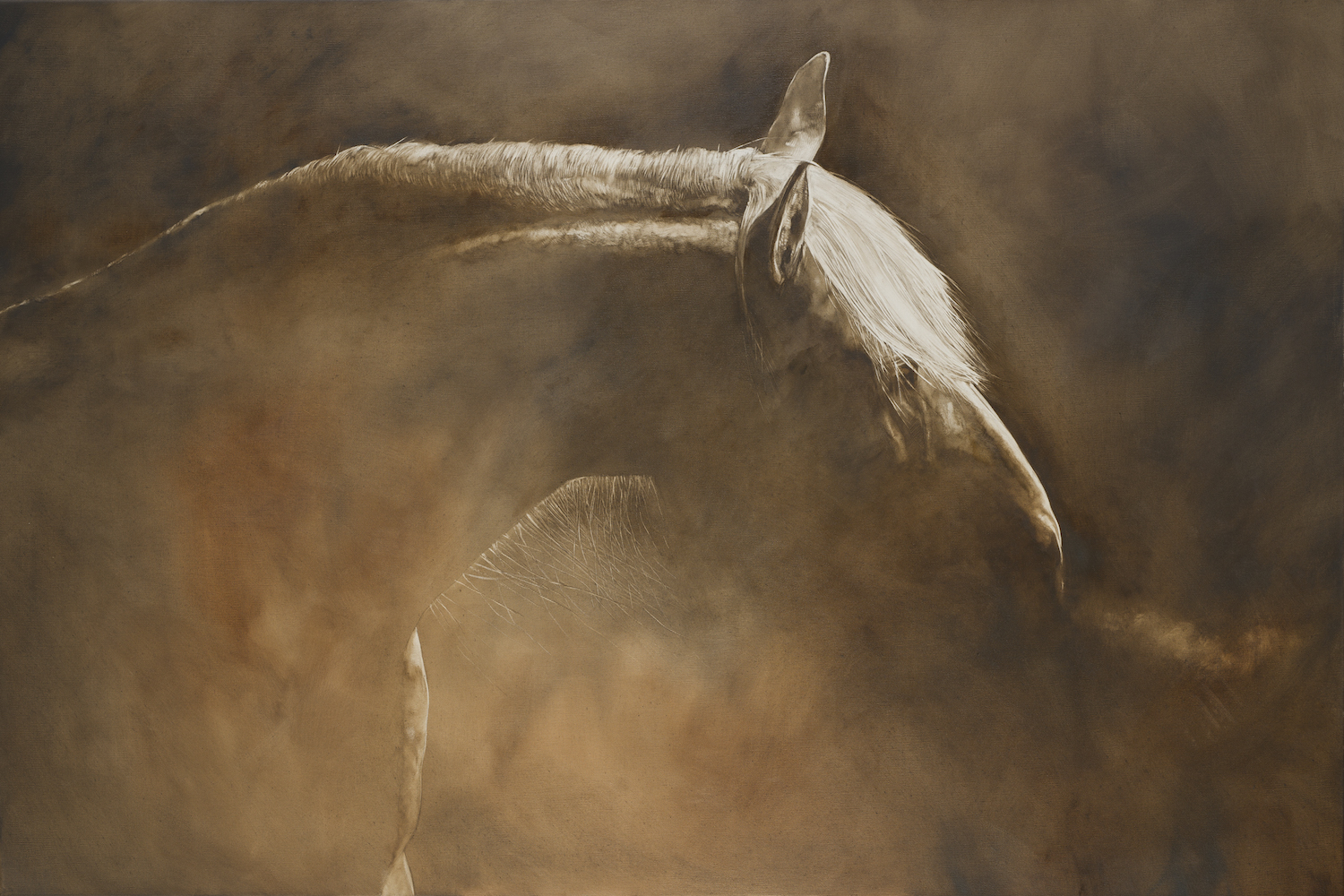 /www.jacksonsart.com/blog/wp-content/uploads/2019/08/Ethereal-300x200.jpg" target="_blank">https://www.jacksonsart.com/blog/wp-content/uploads/2019/08/Ethereal-300x200.jpg 300w, https://www.jacksonsart.com/blog/wp-content/uploads/2019/08/Ethereal-768x512.jpg 768w, https://www.jacksonsart.com/blog/wp-content/uploads/2019/08/Ethereal-1024x683.jpg 1024w, https://www.jacksonsart.com/blog/wp-content/uploads/2019/08/Ethereal-620x413.jpg 620w, https://www.jacksonsart.com/blog/wp-content/uploads/2019/08/Ethereal-192x128.jpg 192w, https://www.jacksonsart.com/blog/wp-content/uploads/2019/08/Ethereal-940x627.jpg 940w" width="1500" />
/www.jacksonsart.com/blog/wp-content/uploads/2019/08/Ethereal-300x200.jpg" target="_blank">https://www.jacksonsart.com/blog/wp-content/uploads/2019/08/Ethereal-300x200.jpg 300w, https://www.jacksonsart.com/blog/wp-content/uploads/2019/08/Ethereal-768x512.jpg 768w, https://www.jacksonsart.com/blog/wp-content/uploads/2019/08/Ethereal-1024x683.jpg 1024w, https://www.jacksonsart.com/blog/wp-content/uploads/2019/08/Ethereal-620x413.jpg 620w, https://www.jacksonsart.com/blog/wp-content/uploads/2019/08/Ethereal-192x128.jpg 192w, https://www.jacksonsart.com/blog/wp-content/uploads/2019/08/Ethereal-940x627.jpg 940w" width="1500" />
Ethereal, 2018
Tony O’Connor
Oil on linen, 100 x 150.5 cm
Photo credit: Stefan Syrowatka
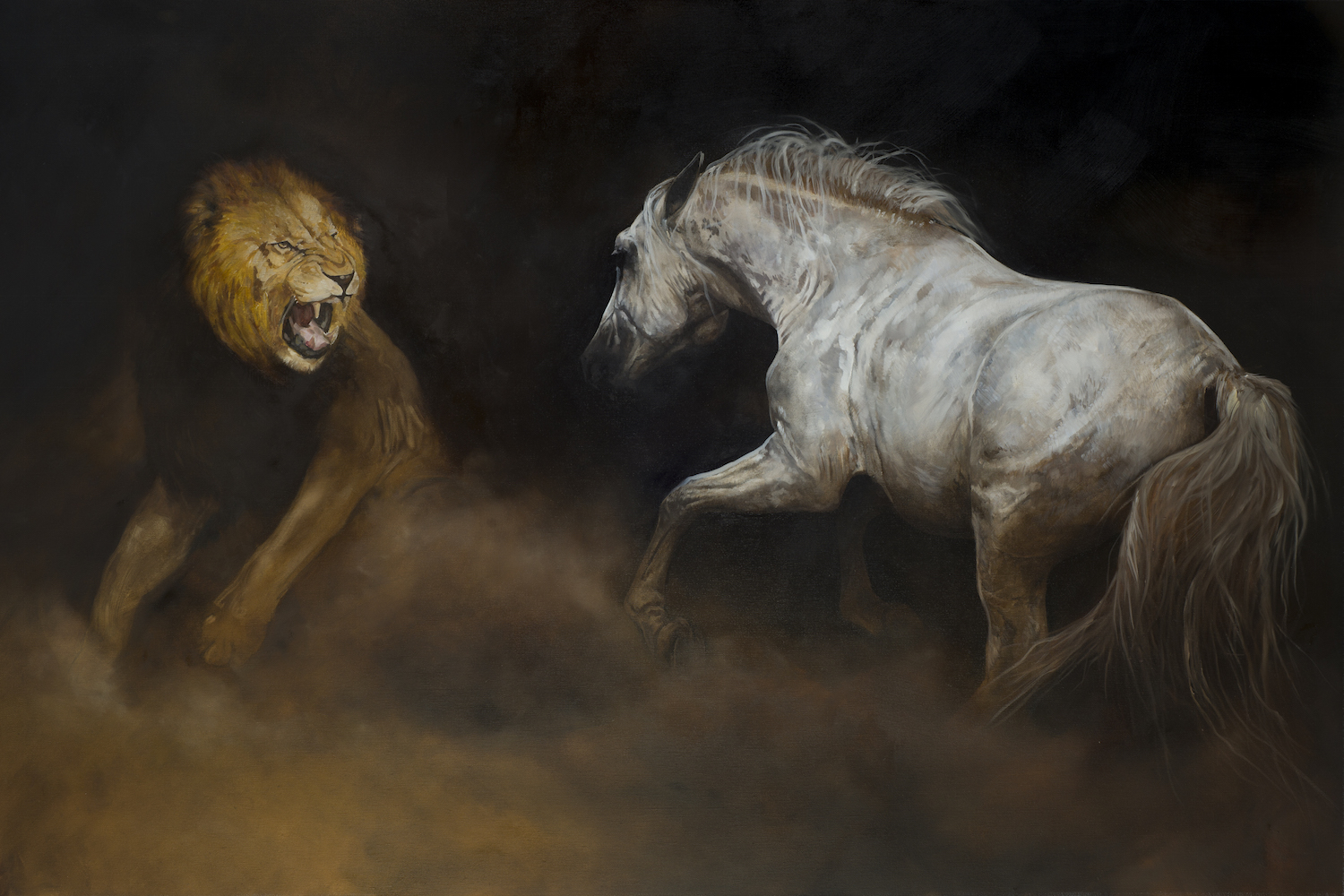 /www.jacksonsart.com/blog/wp-content/uploads/2019/08/Against-all-odds-300x200.jpg" target="_blank">https://www.jacksonsart.com/blog/wp-content/upload...8/Against-all-odds-300x200.jpg 300w, https://www.jacksonsart.com/blog/wp-content/upload...8/Against-all-odds-768x512.jpg 768w, https://www.jacksonsart.com/blog/wp-content/upload.../Against-all-odds-1024x683.jpg 1024w, https://www.jacksonsart.com/blog/wp-content/upload...8/Against-all-odds-620x413.jpg 620w, https://www.jacksonsart.com/blog/wp-content/upload...8/Against-all-odds-192x128.jpg 192w, https://www.jacksonsart.com/blog/wp-content/upload...8/Against-all-odds-940x627.jpg 940w" width="1500" />
/www.jacksonsart.com/blog/wp-content/uploads/2019/08/Against-all-odds-300x200.jpg" target="_blank">https://www.jacksonsart.com/blog/wp-content/upload...8/Against-all-odds-300x200.jpg 300w, https://www.jacksonsart.com/blog/wp-content/upload...8/Against-all-odds-768x512.jpg 768w, https://www.jacksonsart.com/blog/wp-content/upload.../Against-all-odds-1024x683.jpg 1024w, https://www.jacksonsart.com/blog/wp-content/upload...8/Against-all-odds-620x413.jpg 620w, https://www.jacksonsart.com/blog/wp-content/upload...8/Against-all-odds-192x128.jpg 192w, https://www.jacksonsart.com/blog/wp-content/upload...8/Against-all-odds-940x627.jpg 940w" width="1500" />
Against all odds, 2017
Tony O’Connor
Oil on linen, 100 x 150.5 cm
Photo credit: Stefan Syrowatka
 /www.jacksonsart.com/blog/wp-content/uploads/2019/08/Unique-150x150.jpg" target="_blank">https://www.jacksonsart.com/blog/wp-content/uploads/2019/08/Unique-150x150.jpg 150w, https://www.jacksonsart.com/blog/wp-content/uploads/2019/08/Unique-300x300.jpg 300w, https://www.jacksonsart.com/blog/wp-content/uploads/2019/08/Unique-768x768.jpg 768w, https://www.jacksonsart.com/blog/wp-content/uploads/2019/08/Unique-1024x1024.jpg 1024w, https://www.jacksonsart.com/blog/wp-content/uploads/2019/08/Unique-620x620.jpg 620w, https://www.jacksonsart.com/blog/wp-content/uploads/2019/08/Unique-940x940.jpg 940w" width="1500" />
/www.jacksonsart.com/blog/wp-content/uploads/2019/08/Unique-150x150.jpg" target="_blank">https://www.jacksonsart.com/blog/wp-content/uploads/2019/08/Unique-150x150.jpg 150w, https://www.jacksonsart.com/blog/wp-content/uploads/2019/08/Unique-300x300.jpg 300w, https://www.jacksonsart.com/blog/wp-content/uploads/2019/08/Unique-768x768.jpg 768w, https://www.jacksonsart.com/blog/wp-content/uploads/2019/08/Unique-1024x1024.jpg 1024w, https://www.jacksonsart.com/blog/wp-content/uploads/2019/08/Unique-620x620.jpg 620w, https://www.jacksonsart.com/blog/wp-content/uploads/2019/08/Unique-940x940.jpg 940w" width="1500" />
Unique, 2017
Tony O’Connor
Oil on linen, 100 x 100 cm
Photo credit: Stefan Syrowatka
Notable Equine Painters in Art History
Lucy Kemp-Welch, UK, 1869–1958
Lucy Kemp-Welch was a British artist who exhibited a talent for art at an early age. While still a student, she was exhibiting at the Royal Academy and after completing her studies, she established her own art school known as, Kemp-Welch School of Animal Painting.
 /www.jacksonsart.com/blog/wp-content/uploads/2019/08/The_Straw_Ride-_Russley_Park_Remount_Dept_Wiltshire_Art.IWMART3160-300x138.jpg" target="_blank">https://www.jacksonsart.com/blog/wp-content/upload...ire_Art.IWMART3160-300x138.jpg 300w, https://www.jacksonsart.com/blog/wp-content/upload...ire_Art.IWMART3160-768x354.jpg 768w, https://www.jacksonsart.com/blog/wp-content/upload...re_Art.IWMART3160-1024x472.jpg 1024w, https://www.jacksonsart.com/blog/wp-content/upload...ire_Art.IWMART3160-620x286.jpg 620w, https://www.jacksonsart.com/blog/wp-content/upload...ire_Art.IWMART3160-940x433.jpg 940w" width="1500" />
/www.jacksonsart.com/blog/wp-content/uploads/2019/08/The_Straw_Ride-_Russley_Park_Remount_Dept_Wiltshire_Art.IWMART3160-300x138.jpg" target="_blank">https://www.jacksonsart.com/blog/wp-content/upload...ire_Art.IWMART3160-300x138.jpg 300w, https://www.jacksonsart.com/blog/wp-content/upload...ire_Art.IWMART3160-768x354.jpg 768w, https://www.jacksonsart.com/blog/wp-content/upload...re_Art.IWMART3160-1024x472.jpg 1024w, https://www.jacksonsart.com/blog/wp-content/upload...ire_Art.IWMART3160-620x286.jpg 620w, https://www.jacksonsart.com/blog/wp-content/upload...ire_Art.IWMART3160-940x433.jpg 940w" width="1500" />
The Straw Ride, Russley Park Remount Dep’t, Wiltshire, 1919
Lucy Kemp-Welch
Oil on canvas
Kemp-Welch was commissioned by the Women’s Work Section of the Imperial War Museum to produce a painting at the largest Army Remount Depot in Wiltshire. Staffed entirely by women, the depot trained and prepared horses for service in the military.
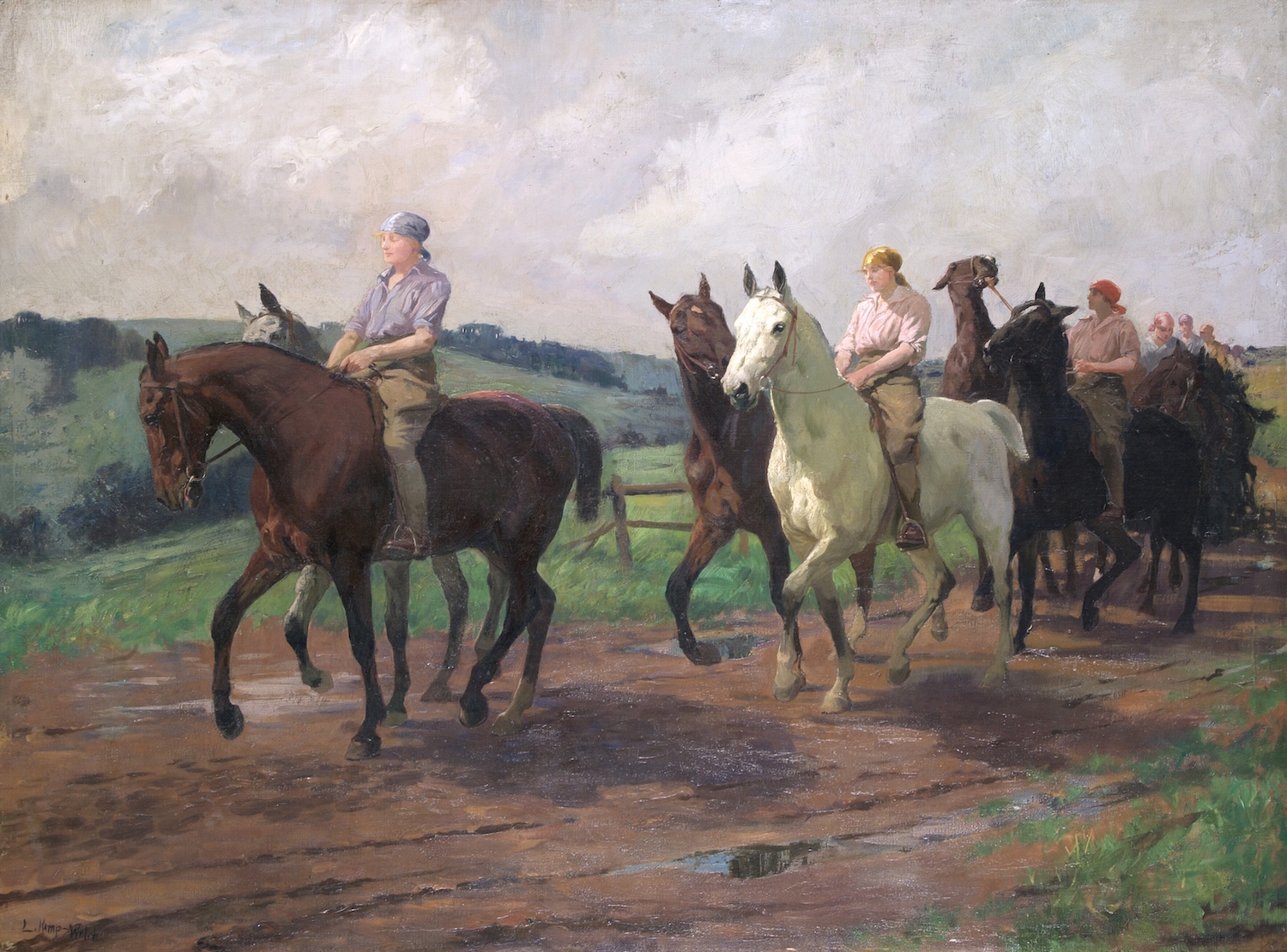 /www.jacksonsart.com/blog/wp-content/uploads/2019/08/The_Ladies_Army_Remount_Dept_Russley_Park_Wiltshire_1918_Art.IWMART3094-300x222.jpg" target="_blank">https://www.jacksonsart.com/blog/wp-content/upload...918_Art.IWMART3094-300x222.jpg 300w, https://www.jacksonsart.com/blog/wp-content/upload...918_Art.IWMART3094-768x568.jpg 768w, https://www.jacksonsart.com/blog/wp-content/upload...18_Art.IWMART3094-1024x758.jpg 1024w, https://www.jacksonsart.com/blog/wp-content/upload...918_Art.IWMART3094-620x459.jpg 620w, https://www.jacksonsart.com/blog/wp-content/upload...918_Art.IWMART3094-940x696.jpg 940w" width="1500" />
/www.jacksonsart.com/blog/wp-content/uploads/2019/08/The_Ladies_Army_Remount_Dept_Russley_Park_Wiltshire_1918_Art.IWMART3094-300x222.jpg" target="_blank">https://www.jacksonsart.com/blog/wp-content/upload...918_Art.IWMART3094-300x222.jpg 300w, https://www.jacksonsart.com/blog/wp-content/upload...918_Art.IWMART3094-768x568.jpg 768w, https://www.jacksonsart.com/blog/wp-content/upload...18_Art.IWMART3094-1024x758.jpg 1024w, https://www.jacksonsart.com/blog/wp-content/upload...918_Art.IWMART3094-620x459.jpg 620w, https://www.jacksonsart.com/blog/wp-content/upload...918_Art.IWMART3094-940x696.jpg 940w" width="1500" />
The Ladies’ Army Remount Dep’t, Russley Park, Wiltshire, 1918
Lucy Kemp-Welch
Oil on canvas
In 1915, she provided the illustrations for Anna Sewell’s Black Beauty, basing her illustrations on Black Prince, the horse belonging to Robert Baden Powell.
 /www.jacksonsart.com/blog/wp-content/uploads/2019/08/Black-Beauty-Lucy-Kemp-Welch-210x300.jpg" target="_blank">https://www.jacksonsart.com/blog/wp-content/upload...ty-Lucy-Kemp-Welch-210x300.jpg 210w, https://www.jacksonsart.com/blog/wp-content/upload...y-Lucy-Kemp-Welch-768x1099.jpg 768w, https://www.jacksonsart.com/blog/wp-content/upload...y-Lucy-Kemp-Welch-715x1024.jpg 715w, https://www.jacksonsart.com/blog/wp-content/upload...ty-Lucy-Kemp-Welch-620x887.jpg 620w" width="932" />
/www.jacksonsart.com/blog/wp-content/uploads/2019/08/Black-Beauty-Lucy-Kemp-Welch-210x300.jpg" target="_blank">https://www.jacksonsart.com/blog/wp-content/upload...ty-Lucy-Kemp-Welch-210x300.jpg 210w, https://www.jacksonsart.com/blog/wp-content/upload...y-Lucy-Kemp-Welch-768x1099.jpg 768w, https://www.jacksonsart.com/blog/wp-content/upload...y-Lucy-Kemp-Welch-715x1024.jpg 715w, https://www.jacksonsart.com/blog/wp-content/upload...ty-Lucy-Kemp-Welch-620x887.jpg 620w" width="932" />
Illustration by Lucy Kemp-Welch for Black Beauty by Anna Sewell, 1915.
Rosa Bonheur, France, 1822–1899
Rosa Bonheur was a French animalière, considered to be the most famous female painter during the nineteenth century. Her artistic talent was fostered from an early age with her father bringing in live animals to the family home for Rosa to sketch from.
 /www.jacksonsart.com/blog/wp-content/uploads/2019/08/The-Horse-Fair-The-Metropolitan-Museum-of-Art-300x154.jpg" target="_blank">https://www.jacksonsart.com/blog/wp-content/upload...itan-Museum-of-Art-300x154.jpg 300w, https://www.jacksonsart.com/blog/wp-content/upload...itan-Museum-of-Art-768x395.jpg 768w, https://www.jacksonsart.com/blog/wp-content/upload...tan-Museum-of-Art-1024x527.jpg 1024w, https://www.jacksonsart.com/blog/wp-content/upload...itan-Museum-of-Art-620x319.jpg 620w, https://www.jacksonsart.com/blog/wp-content/upload...itan-Museum-of-Art-940x484.jpg 940w" width="1500" />
/www.jacksonsart.com/blog/wp-content/uploads/2019/08/The-Horse-Fair-The-Metropolitan-Museum-of-Art-300x154.jpg" target="_blank">https://www.jacksonsart.com/blog/wp-content/upload...itan-Museum-of-Art-300x154.jpg 300w, https://www.jacksonsart.com/blog/wp-content/upload...itan-Museum-of-Art-768x395.jpg 768w, https://www.jacksonsart.com/blog/wp-content/upload...tan-Museum-of-Art-1024x527.jpg 1024w, https://www.jacksonsart.com/blog/wp-content/upload...itan-Museum-of-Art-620x319.jpg 620w, https://www.jacksonsart.com/blog/wp-content/upload...itan-Museum-of-Art-940x484.jpg 940w" width="1500" />
The Horse Fair, 1852–55
Rosa Bonheur
Oil on canvas, 244.5 x 506.7 cm
The Horse Fair was painted after a year of studying and sketching at the Paris Horse Market. She dressed in traditional men’s clothing in order not to draw attention to herself and to avoid harassment. Most painters at the time, gave an emotional effect to the horse’s eyes in their work, painting them with human characteristics, but in this painting, the artist depicted them as she actually saw them, painting them as they were.
 /www.jacksonsart.com/blog/wp-content/uploads/2019/08/A-WHITE-HORSE-300x225.png" target="_blank">https://www.jacksonsart.com/blog/wp-content/uploads/2019/08/A-WHITE-HORSE-300x225.png 300w, https://www.jacksonsart.com/blog/wp-content/uploads/2019/08/A-WHITE-HORSE-620x464.png 620w" width="720" />
/www.jacksonsart.com/blog/wp-content/uploads/2019/08/A-WHITE-HORSE-300x225.png" target="_blank">https://www.jacksonsart.com/blog/wp-content/uploads/2019/08/A-WHITE-HORSE-300x225.png 300w, https://www.jacksonsart.com/blog/wp-content/uploads/2019/08/A-WHITE-HORSE-620x464.png 620w" width="720" />
A White Horse, 1866
Rosa Bonheur
Oil on canvas, 71.8 x 94.9 cm
 /www.jacksonsart.com/blog/wp-content/uploads/2019/08/1024px-Rosa_Bonheur_-_A_ghillie_and_two_Shetland_ponies_in_a_misty_landscape-300x185.jpg" target="_blank">https://www.jacksonsart.com/blog/wp-content/upload..._a_misty_landscape-300x185.jpg 300w, https://www.jacksonsart.com/blog/wp-content/upload..._a_misty_landscape-768x473.jpg 768w, https://www.jacksonsart.com/blog/wp-content/upload..._a_misty_landscape-620x382.jpg 620w, https://www.jacksonsart.com/blog/wp-content/upload..._a_misty_landscape-940x579.jpg 940w, https://www.jacksonsart.com/blog/wp-content/upload..._a_misty_landscape-340x210.jpg 340w" width="1024" />
/www.jacksonsart.com/blog/wp-content/uploads/2019/08/1024px-Rosa_Bonheur_-_A_ghillie_and_two_Shetland_ponies_in_a_misty_landscape-300x185.jpg" target="_blank">https://www.jacksonsart.com/blog/wp-content/upload..._a_misty_landscape-300x185.jpg 300w, https://www.jacksonsart.com/blog/wp-content/upload..._a_misty_landscape-768x473.jpg 768w, https://www.jacksonsart.com/blog/wp-content/upload..._a_misty_landscape-620x382.jpg 620w, https://www.jacksonsart.com/blog/wp-content/upload..._a_misty_landscape-940x579.jpg 940w, https://www.jacksonsart.com/blog/wp-content/upload..._a_misty_landscape-340x210.jpg 340w" width="1024" />
A Ghillie and Two Shetland Ponies in a Misty Landscape, 1861
Rosa Bonheur
Oil on canvas, 64 x 101.5 cm
Eugène Delacroix, France, 1798–1863
The famous French romanticist, Eugène Delacroix, painted an enormous amount of horses in his life, the most well-known is the incredibly expressive Horse Frightened by Lightning.
 /www.jacksonsart.com/blog/wp-content/uploads/2019/08/Eugene_Delacroix_-_Horse_Frightened_by_Lightning_-_Google_Art_Project-300x221.jpg" target="_blank">https://www.jacksonsart.com/blog/wp-content/upload...Google_Art_Project-300x221.jpg 300w, https://www.jacksonsart.com/blog/wp-content/upload...Google_Art_Project-768x567.jpg 768w, https://www.jacksonsart.com/blog/wp-content/upload...oogle_Art_Project-1024x756.jpg 1024w, https://www.jacksonsart.com/blog/wp-content/upload...Google_Art_Project-620x458.jpg 620w, https://www.jacksonsart.com/blog/wp-content/upload...Google_Art_Project-940x694.jpg 940w" width="1500" />
/www.jacksonsart.com/blog/wp-content/uploads/2019/08/Eugene_Delacroix_-_Horse_Frightened_by_Lightning_-_Google_Art_Project-300x221.jpg" target="_blank">https://www.jacksonsart.com/blog/wp-content/upload...Google_Art_Project-300x221.jpg 300w, https://www.jacksonsart.com/blog/wp-content/upload...Google_Art_Project-768x567.jpg 768w, https://www.jacksonsart.com/blog/wp-content/upload...oogle_Art_Project-1024x756.jpg 1024w, https://www.jacksonsart.com/blog/wp-content/upload...Google_Art_Project-620x458.jpg 620w, https://www.jacksonsart.com/blog/wp-content/upload...Google_Art_Project-940x694.jpg 940w" width="1500" />
Horse Frightened by Lightning, 1825-1829
Eugène Delacroix
Watercolour, and lead white on paper, 23.6 x 32 cm
His animal paintings often explore humans’ relationship to nature using expressive brushstrokes for movement and bold, dramatic colours.
 /www.jacksonsart.com/blog/wp-content/uploads/2019/08/Eugéne_Delacroix_-_Rider_Attacked_by_a_Jaguar_-_Google_Art_Project-244x300.jpg" target="_blank">https://www.jacksonsart.com/blog/wp-content/upload...Google_Art_Project-244x300.jpg 244w, https://www.jacksonsart.com/blog/wp-content/upload...Google_Art_Project-768x944.jpg 768w, https://www.jacksonsart.com/blog/wp-content/upload...oogle_Art_Project-833x1024.jpg 833w, https://www.jacksonsart.com/blog/wp-content/upload...Google_Art_Project-620x762.jpg 620w, https://www.jacksonsart.com/blog/wp-content/upload...oogle_Art_Project-940x1155.jpg 940w" width="2415" />
/www.jacksonsart.com/blog/wp-content/uploads/2019/08/Eugéne_Delacroix_-_Rider_Attacked_by_a_Jaguar_-_Google_Art_Project-244x300.jpg" target="_blank">https://www.jacksonsart.com/blog/wp-content/upload...Google_Art_Project-244x300.jpg 244w, https://www.jacksonsart.com/blog/wp-content/upload...Google_Art_Project-768x944.jpg 768w, https://www.jacksonsart.com/blog/wp-content/upload...oogle_Art_Project-833x1024.jpg 833w, https://www.jacksonsart.com/blog/wp-content/upload...Google_Art_Project-620x762.jpg 620w, https://www.jacksonsart.com/blog/wp-content/upload...oogle_Art_Project-940x1155.jpg 940w" width="2415" />
Rider Attacked by a Jaguar, 1855
Eugène Delacroix
Oil on canvas, 23.5 x 28.5 cm
 /www.jacksonsart.com/blog/wp-content/uploads/2019/08/DP852107-254x300.jpg" target="_blank">https://www.jacksonsart.com/blog/wp-content/uploads/2019/08/DP852107-254x300.jpg 254w, https://www.jacksonsart.com/blog/wp-content/uploads/2019/08/DP852107-768x909.jpg 768w, https://www.jacksonsart.com/blog/wp-content/uploads/2019/08/DP852107-866x1024.jpg 866w, https://www.jacksonsart.com/blog/wp-content/uploads/2019/08/DP852107-620x733.jpg 620w, https://www.jacksonsart.com/blog/wp-content/uploads/2019/08/DP852107-940x1112.jpg 940w" width="1268" />
/www.jacksonsart.com/blog/wp-content/uploads/2019/08/DP852107-254x300.jpg" target="_blank">https://www.jacksonsart.com/blog/wp-content/uploads/2019/08/DP852107-254x300.jpg 254w, https://www.jacksonsart.com/blog/wp-content/uploads/2019/08/DP852107-768x909.jpg 768w, https://www.jacksonsart.com/blog/wp-content/uploads/2019/08/DP852107-866x1024.jpg 866w, https://www.jacksonsart.com/blog/wp-content/uploads/2019/08/DP852107-620x733.jpg 620w, https://www.jacksonsart.com/blog/wp-content/uploads/2019/08/DP852107-940x1112.jpg 940w" width="1268" />
A Wild Horse, 1828
Eugène Delacroix
Lithograph, 31 x 26 cm
Click here to view a short video of horses throughout Art History
https://www.jacksonsart.com/blog/2019/08/23/horse-...egcjAeph3Au2DjZ_fbHsYGDo-5lkAU
| Рубрики: | Art/art history |
| Комментировать | « Пред. запись — К дневнику — След. запись » | Страницы: [1] [Новые] |






